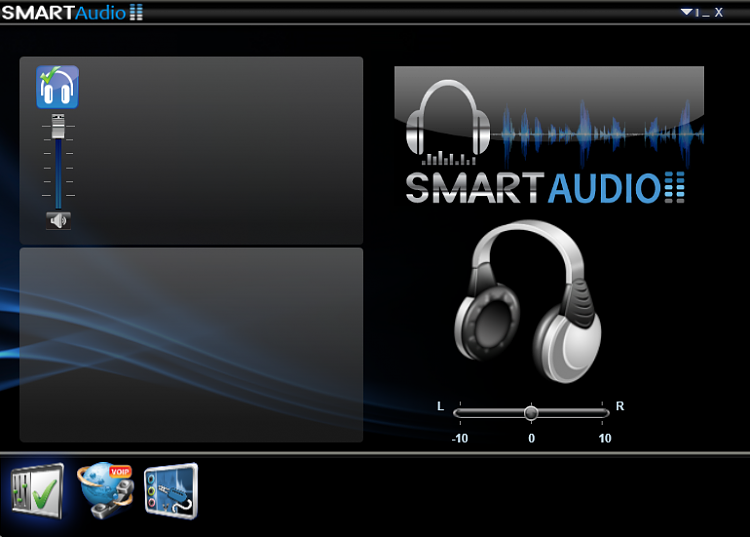The Future of the Smart Home: What to Expect from Apple’s Next HomePod
For years, Apple has been methodically building the pillars of its smart home ecosystem. While the iPhone remains the sun around which all other devices orbit, the HomePod mini has quietly become a crucial, foundational element. Launched as an affordable and acoustically impressive entry point, it serves not just as a smart speaker but as a central hub for HomeKit, a Thread border router, and an ambient source for Siri. As we look to the future, speculation is mounting about its successor. A next-generation HomePod mini isn’t just an iterative update; it represents a significant leap forward in Apple’s vision for an intelligent, interconnected, and private home environment. This evolution will likely bring substantial upgrades in processing power, audio fidelity, connectivity, and smart home intelligence, further cementing its role as the nerve center of the modern Apple-powered home. This article delves into the technical advancements, potential features, and strategic implications of what we can expect from the next chapter in HomePod news, exploring how it will integrate more deeply with the entire suite of Apple products and services.
The Foundation: Reimagining Audio and Intelligence
The core of any smart speaker is its ability to hear, process, and respond with high-quality audio. The next HomePod mini is poised to receive foundational upgrades that will dramatically enhance these core functions, setting a new standard for compact smart speakers.
Enhanced Computational Audio with a New Chip
The original HomePod mini is powered by the S5 chip, the same processor found in the Apple Watch Series 5. While capable, technology has advanced significantly. It’s highly anticipated that a new model will feature a more powerful, modern Apple Silicon chip, perhaps an S8 or S9 from the latest Apple Watch news, or even a custom-designed ‘H’ series chip akin to what we see in AirPods. This upgrade is about more than just speed. A faster processor unlocks a new level of computational audio. Much like the H2 chip transformed the audio experience in the latest AirPods Pro news, a new chip in the HomePod mini would allow for more sophisticated real-time audio processing. This means the device could analyze room acoustics and its own placement more accurately to tune its sound profile on the fly, delivering richer bass, clearer highs, and a more expansive soundstage from the same compact form factor. This processing headroom is also critical for improving Siri’s performance, a key area of focus in recent Siri news, enabling faster, on-device processing for common requests.
Redesigned Acoustics for a Richer Soundscape
While the current HomePod mini punches well above its weight class in audio quality, there’s always room for improvement. A successor could feature a redesigned full-range driver and dual passive radiators, engineered to move more air and produce deeper, more resonant bass without distortion at high volumes. Apple’s audio engineering has come a long way since the days of simple earbuds bundled with devices, a journey that started with the iconic white earbuds from early iPod news. Today, with products like the AirPods Max, Apple has proven its high-fidelity audio prowess. Applying these learnings to a next-generation mini could result in a sound that defies its physical size, making a stereo pair an even more compelling option for immersive music or as a sound system for an Apple TV.
The Role of UWB and Precision Finding
The current HomePod mini includes the U1 Ultra Wideband chip, but its capabilities are arguably underutilized. A new model could expand on this technology significantly. Imagine a more advanced Handoff feature where you don’t just transfer audio, but your iPhone or Apple Watch can precisely locate the speaker in 3D space. This could enable new augmented reality experiences, a major focus of recent Apple AR news. Furthermore, this enhanced UWB functionality could turn every HomePod mini in your house into a high-precision indoor positioning beacon, supercharging the Find My network. This would mean that finding a lost set of keys with an AirTag would be instantaneous and directionally accurate, moving beyond the simple proximity alerts covered in AirTag news.
Expanding the Ecosystem: Deeper Integration and Smarter Connectivity

A new HomePod mini will not exist in a vacuum. Its greatest strength will be its ability to act as a seamless and powerful hub, connecting and enhancing every other Apple device and smart home accessory. The next generation of connectivity standards and software intelligence will be key to unlocking this potential.
Wi-Fi 6E and Thread: The Backbone of the Future Home
To serve as a reliable home hub, robust connectivity is non-negotiable. The adoption of Wi-Fi 6E would be a game-changing upgrade. By utilizing the 6 GHz band, Wi-Fi 6E offers significantly more bandwidth and less interference from older devices, ensuring flawless streaming of high-resolution lossless audio and immediate responsiveness for smart home commands. This is crucial in a home filled with connected devices. Equally important is the evolution of Thread. As a foundational technology for the Matter smart home standard, an upgraded Thread radio in the HomePod mini would create a faster, more reliable, and more extensive mesh network for all compatible Apple accessories news. This means your lights, locks, and sensors would respond instantly, a core promise of the interconnected Apple ecosystem news.
A More Proactive and Contextually Aware Siri
Siri’s intelligence is a constant topic of discussion. A new HomePod mini, armed with a more powerful chip, could enable significant advancements. A major leap would be more on-device processing for a wider range of queries. This not only speeds up response times but also enhances user privacy, a cornerstone of Apple privacy news and a key differentiator from competitors. This aligns with Apple’s broader strategy of on-device intelligence, which is a recurring theme in iOS security news. Furthermore, we can expect Siri to become more contextually aware. By leveraging improved Voice Recognition and UWB, Siri could know not just *who* is speaking, but *where* they are in the room, tailoring responses and actions accordingly. For instance, saying “Turn on the lights” could activate the lights nearest to your location in the room.
Seamless Integration with Apple Vision Pro
The launch of Apple’s spatial computer opens up a new frontier for device interaction, and the HomePod mini is perfectly positioned to play a supporting role. As highlighted in recent Apple Vision Pro news, spatial audio is a key component of the experience. A network of next-generation HomePod minis could act as spatial audio anchors, working in concert with the Vision Pro to create an incredibly immersive and persistent soundscape that maps directly to your physical environment. As you move through your home, the audio could realistically emanate from virtual objects placed in your space, handed off seamlessly from one speaker to the next. This could even extend to new input methods, where a rumored Vision Pro wand news item or hand gestures could interact with smart home controls anchored to a HomePod’s location.
Beyond Audio: New Designs, Health Sensing, and Evolving Use Cases
The next HomePod mini could evolve beyond a simple speaker and hub, integrating new sensors and functionalities that touch upon health, environmental awareness, and home entertainment in novel ways.
A Refreshed Design and New Colorways
Apple has a rich history of using color to define its products, a tradition that dates back to the vibrant iMac G3 and was a hallmark of the iPod Mini news and iPod Nano news. It’s highly likely a new HomePod mini would launch in a refreshed palette of colors, perhaps aligning with the latest iPhone or iMac lineups. While a radical redesign is unlikely for the ‘mini’ branding, we might see subtle refinements to the fabric mesh, potentially using more recycled materials, or a slightly tweaked form factor. While some dream of a revival of classic designs, with forums buzzing about hypothetical iPod revival news, Apple’s focus is clearly on minimalist, ambient devices that blend into the home.
Integrating Health and Environmental Sensing

The current HomePod mini contains dormant temperature and humidity sensors that were later activated via software. This provides a clear precedent for expanded environmental sensing. A future model could integrate more advanced sensors, such as those for air quality (monitoring VOCs or PM2.5 particles). This data would feed directly into the Home and Health apps, providing a more holistic view of your living environment. This push aligns perfectly with broader trends in Apple health news, where the company is increasingly focused on providing users with actionable health and wellness data. Imagine receiving a notification on your Apple Watch that the air quality in your home office is declining, prompting you to open a window, all triggered by your HomePod mini.
The HomePod as a Central Entertainment Hub
While the Apple TV is the star of the living room, a pair of HomePod minis can serve as an excellent audio solution. The next generation could enhance this synergy. With improved acoustics and processing, a stereo pair could offer a more convincing virtual Dolby Atmos experience, creating an affordable yet high-quality soundbar alternative for bedrooms or smaller living rooms. This strategy would complement the latest Apple TV marketing news, which positions the device as the center of home entertainment. This deep integration could even extend to creative applications; one could imagine using an iPad to create a smart home layout, almost like an iPad vision board news feature, where you could virtually place and configure speakers, and the system would automatically calibrate the audio for that specific setup.
Practical Considerations: Price, Positioning, and Recommendations
While new features are exciting, the success of the next HomePod mini will also depend on its price, market positioning, and how easily users can integrate it into their lives.
Price Point and Market Strategy

The $99 price point of the current HomePod mini has been critical to its success, making it an accessible entry point into Apple’s smart home. For the next generation to have a similar impact, Apple will likely aim to maintain this price or something very close to it. The value proposition will continue to be a tight integration with the Apple ecosystem, superior audio quality in its class, and a strong commitment to privacy. This contrasts with competitors who often monetize user data. The challenge for Apple is to pack in new technology like an advanced chip and Wi-Fi 6E while holding the line on price.
Best Practices for Integration
To get the most out of a future HomePod mini, users should think of it as more than a single speaker.
- Create a Mesh Network: Place multiple units throughout the home. This not only provides multi-room audio but also strengthens your Thread mesh network for smart home devices, ensuring robust and reliable performance.
- Leverage Automations: Use the new environmental sensors as triggers in the Home app. For example, create an automation to turn on a fan or air purifier if the air quality sensor detects a drop.
- Default Speaker for Apple TV: For a simple and high-quality audio setup in a secondary room, set a single or stereo pair of HomePod minis as the default audio output for an Apple TV 4K.
Common Pitfalls to Avoid
Despite the expected improvements, it’s important to have realistic expectations. A new HomePod mini, no matter how advanced, will not replace a dedicated, high-end surround sound system for a home theater. Furthermore, while Siri is expected to improve, users migrating from other platforms should be prepared for its unique characteristics and occasional limitations. The key is to embrace it as the central hub for an Apple-centric smart home, where its true power is unlocked.
Conclusion: The Ambient Heart of the Apple Home
The next-generation HomePod mini is poised to be far more than a simple refresh. It represents the maturation of Apple’s ambient computing strategy—a device designed to be an intelligent, ever-present, yet unobtrusive hub for the home. By integrating a more powerful chip for advanced computational audio and a smarter Siri, next-generation connectivity with Wi-Fi 6E and Thread, and deeper integration with the entire Apple ecosystem, from the Apple Watch to the Vision Pro, it will solidify its position as an essential piece of hardware. This device is the logical evolution from a world of personal devices, which began with the revolutionary iPod Classic news, to a world of shared, intelligent spaces. The HomePod mini 2 won’t just play music; it will listen, sense, and orchestrate the symphony of the modern smart home, making it more seamless, private, and intelligent than ever before.











